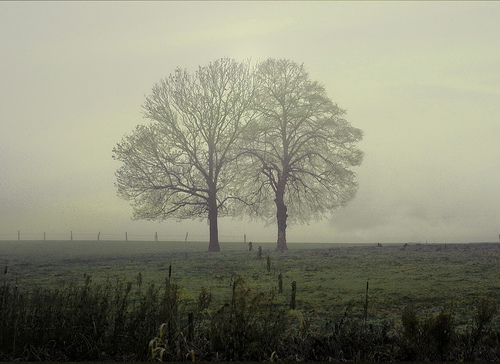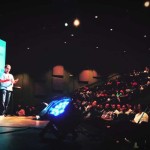We run our website the way we wished the whole internet worked: we provide high quality original content with no ads. We are funded solely by your direct support. Please consider supporting this project.

The Destiny of God’s People
Jesus represents the realization of God’s glorious dream for humanity. In Christ, we see what we who are in Christ are destined to be. As a stick placed in a river is destined to be carried to whatever body of water the river runs to, so all who have allowed themselves to be drawn by the Spirit into Christ are destined to eventually look like Jesus (Rom. 8:28). When he appears at the end of the age, we shall see him as he truly is, John says, for we shall be like him (1 Jn. 3:2).
This is why the New Testament speaks of Christ as “the firstborn among many brothers and sisters”(Rom 8:29). A new family is being brought into being, and we shall all resemble Christ. This is also what Paul means when he refers to Jesus as “the first fruit” of those who now “sleep” (1 Cor. 15:20). The “first fruit” in ancient Israel referred to fruit that was picked before the rest of the crop. These early pickings were, among other things, considered the guarantee that God would be faithful in bringing forth the rest of the crop. Jesus is “the first fruit” of a coming harvest that will look the same as him. Jesus reveals ahead of time the harvest of the humanity that God has always been dreaming of.
Jesus was the Kingdom of God and why all who belong to the Kingdom by definition look like him. The entire creation project is centered on God’s dream of uniting himself with humanity as humanity co-rules with him on the earth. The whole creation is being steered toward a vision of a future in which everything will be harmoniously united under Christ, and thus become a dome in which God is King (Eph 1:9).
While individuals are free to align themselves with this divine vision or not, this glorious vision of humanity and creation becoming a radiant domain of God’s reign, dancing with and in the triune God, has been predestined from before the foundation of the world. It cannot fail to happen. And what we are now discovering is that Jesus incarnates this future in the present. He is the predestined man who embodies the predestined future (1 Pet 1:20).
Jesus manifests the future reign of God in the midst of the present reign of evil powers. He manifests the future union of God with humanity in the midst of a rebellious epoch in which God and humanity continue to be estranged from one another. He manifests humanity restored to their rightful place over the earth in the midst of a humanity that continues to be oppressed. He manifests humanity freed from sin and sickness in the midst of a humanity yet in bondage to sin and yet infected by the devil with sickness.
So too, in the midst of a world that continues to be defined by oppressive powers that incline us toward violence and hatred, Jesus reveals what humanity will look like when we’re exhaustively defined by God’s love. In the midst of a world where death continues to reign, Jesus’ resurrection reveals what humanity will be like when death has finally been overcome. In the midst of a world that continues to be oppressed by the ugly kingdom of Satan, Jesus reveals the beautiful Kingdom of God.
The sheer beauty of this coming kingdom, shining in the midst of the present ugly world, pulls people who are hungry for a different way of doing life into it. We might say it this way: Jesus creates a tribe of the future that God uses to move the oppressed world into its beautiful future.
Photo credit: h.koppdelaney via Visual Hunt / CC BY-ND
Category: General
Tags: Jesus, Kingdom of God, Peace, Racial Reconciliation, Unity, Warfare Worldview
Topics: Following Jesus
Related Reading

The Cruciform Center Part 1: How Matthew, Mark and Luke Reveal a Cruciform God
In the previous series of posts I’ve argued that a merely “Christocentric” approach to God is too general, as can be shown by the widely different conceptions of God people arrive at, despite their claim to be “Christocentric.” The confession that Jesus reveals what God is like is simply too abstract, for it leaves too…

What Is The Warfare Worldview?
Greg has written extensively on something he calls the Warfare Worldview. Many today believe that everything that takes place in the world is ultimately part of a divine blueprint and contributes in some way to the glory of God. As opposed to this view, Greg argues that wills other than God’s are responsible for evil…

What Power Do You Trust?
Governments and nations have always relied on fighting to survive. They punish criminals who threaten their welfare. They go to war against enemies who attack their borders or stand in the way of their agenda. This is how the kingdoms of the world maintain law and order and advance their causes. By contrast, the Kingdom…

Happy New Year from ReKnew
Bless you all as we embark on a brand new year. We’re praying that the Kingdom of God penetrates the darkness of our world with light and peace and love that reflects his goodness. Photo credit: Marcia Erickson

Sermon Clip: Extravagant Forgiveness, Extravagant Love
Greg Boyd had the wonderful opportunity to guest speak at a great church in Carlisle, PA called Carlisle BIC. He spoke on the topic of forgiveness and love. In this short clip, Greg describes how a prostitute was being judged by the Pharisees, but Jesus came to her rescue. You can listen to the full…

Isn’t it contradictory to say Jesus is “fully God” and “fully human”?
READER: God is, by definition, eternal, having neither beginning nor end. Human beings are, by definition, finite, beginning at a certain point in time. How, then, can Jesus be both God (eternal) and human (finite)? Isn’t that a contradiction? Similarly, while God is omniscient, humans aren’t. How could Jesus be both omniscient God and non-omniscient…
